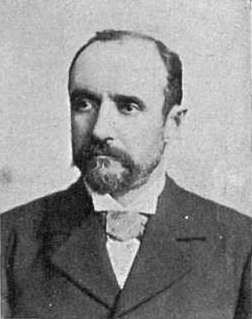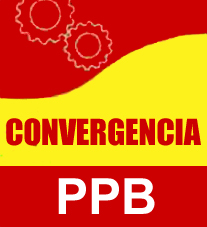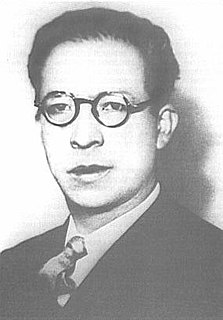Related Research Articles

Daniel Domingo Salamanca Urey was a Bolivian politician who served as the 33rd President of Bolivia from 1931 to 1934 until he was overthrown in a coup d'état on November 27, 1934, during the country's disastrous Chaco War with Paraguay.

Ismael Montes Gamboa was a Bolivian general and political figure who served as the 26th President of Bolivia twice nonconsecutively from 1904 to 1909 and from 1913 to 1917.
The New Republican Force is a center-right political party in Bolivia. It is mainly based in the department of Cochabamba.

José Manuel Inocencio Pando Solares was a Bolivian military officer who served as the 25th President of Bolivia from 1899 to 1904. Born in Luribay, he studied medicine, joined the army during the War of the Pacific against Chile (1879–80), and later dedicated himself to exploring his country's vast and thinly populated lowland forests. In the 1880s he joined the Liberal Party of Eliodoro Camacho, becoming its leader in 1894. Pando served as Congressional Representative from Chuquisaca during the administration of Severo Fernández (1896–99) and was the nucleus around which coalesced the increasingly more vocal and seditious efforts of the Liberal Party to topple the Conservatives from power.

Mamerto Urriolagoitia Harriague was a Bolivian lawyer and politician who served as the 43rd president of Bolivia from 1949 to 1951. A member of the Republican Socialist Unity Party, he had previously served as the 26th vice president of Bolivia from 1947 to 1949 under President Enrique Hertzog.

José Manuel Gutiérrez Guerra, known as "the last Oligarch," was a Bolivian economist and statesman who served as the 28th President of Bolivia from 1917 to 1920. He was the grandson of Pedro José Domingo de Guerra, acting president in 1879, a man of high integrity and chief justice of the Supreme Court, who had died in office after he was forced to assume presidential responsibilities during the disastrous War of the Pacific.
Bolivia's defeat by Paraguay in the Chaco War of 1932–1936 marked a turning point in the modern history of Bolivia. Great loss of life and territory discredited the traditional ruling classes, while service in the army produced stirrings of political awareness among the indigenous people. A large portion of the contested Gran Chaco region was surrendered to Paraguay. In return Bolivia was given access to the Paraguay River where Puerto Busch was founded and, with this, free access to the Atlantic Ocean through international waters was possible. In 1936 Standard Oil's Bolivian operations were nationalized and the state-owned firm Yacimientos Petroliferos Fiscales Bolivianos (YPFB) was created. From the end of the Chaco War until the 1952 Bolivian National Revolution, the emergence of contending ideologies and the demands of new groups convulsed Bolivian politics.

Plan Progress for Bolivia – National Convergence was a coalition that was Bolivia's largest national opposition political party following the 2009 general elections. PPB-CN is a Bolivian political alliance of the right-wing formed in advance of the 2009 elections. The alliance was created at a meeting in La Paz's Zona Sur on 4 September 2009 by New Republican Force represented by Manfred Reyes Villa, Plan Progress for Bolivia, represented by José Luis Paredes, the former prefect of La Paz department; Autonomy for Bolivia led by Luis Alberto Serrate Middagh; Peoples Party led by Pablo Nicolás Camacho Bedregal; and the Nationalist Revolutionary Movement, led by Guillermo Bedregal Gutiérrez. However, the alliance did not continue to function in Bolivia's 2014 elections, and several of its elected senators stated in late 2013 that its role is ending.
The Socialist Republican Party, whose members were also known as "Saavedristas", was a political party in Bolivia. The Socialist Republican Party emerged on January 28, 1921, as the Republican Party was bifurcated on the same day Bautista Saavedra took office as President of the country. The Socialist Republican Party was formed by Saavedra's followers.
The Liberal Party was one of two major political parties in Bolivia in the late 19th century and the first half of the 20th century. The other was the Conservative Party. The Liberal Party was formally founded in 1883 by Eliodoro Camacho. The party espoused freedom of religion, a strict separation between church and state, legal acceptance of civil marriages and divorce, and strict adherence to democratic procedures. When the party took power in 1899, it moved the base of the presidency and the Congress to La Paz, which became the de facto capital city. The Supreme Court remained in Sucre. To this day, Sucre is the de jure capital of Bolivia while La Paz acts as the de facto seat of government.

General elections were held in Bolivia on 6 May 1951. Víctor Paz Estenssoro of the opposition Revolutionary Nationalist Movement (MNR) received the most votes in the presidential election, but as he did not obtain an absolute majority, the National Congress was constitutionally obliged to elect a President on 6 August from the three candidates who received the most public votes. However, on 16 May a military junta assumed responsibility for the Government with Brigadier General Hugo Ballivián as President.

General elections were held in Bolivia on 10 March 1940, electing both a new President of the Republic and a new National Congress. The elections were the first in six years since 1934 and the first not to be annulled in nine years since the general election of 1931.
The Republican Party was a Bolivian political party founded in 1914.
The Genuine Republican Party was founded in Bolivia in 1921 by José María Escalier and Daniel Domingo Salamanca Urey following a split in the Republican Party.
The Republican Socialist Unity Party was a political party founded on 10 November 1946 in Bolivia as the fusion of the Republican Socialist Party, the Genuine Republican Party, the United Socialist Party, and the Independent Socialist Party.
The Radical Party was founded in 1913, following a split in the Liberal Party in Bolivia.
The Social Democratic Party was a conservative, small and elitist, but influential Bolivian political party formed by middle-class intellectuals.
The Nationalist Union of the People was a right-wing, pro-military electoral political alliance in Bolivia.

The 1938 Bolivian National Convention was a meeting of the unicameral Bolivian legislature composed of an elected constituent assembly made up of the Chamber of Senators and Chamber of Deputies. It met in La Paz from 25 May to 30 October 1938 and was charged with rewriting the Constitution of Bolivia. President David Toro had called for the National Convention in 1937, but by the time it was held he had been forced to resign in a coup d'état which brought the young lieutenant colonel Germán Busch to power on 13 July 1937.

Gabriel Gosálvez Tejada was a Bolivian politician, journalist, economist, and diplomat. Throughout his political career, Gosálvez held various ministerial officers and diplomatic posts as a member of the United Socialist Party. When that party merged into the Republican Socialist Unity Party, Gosálvez was presented as its presidential candidate in the 1951 general election.
